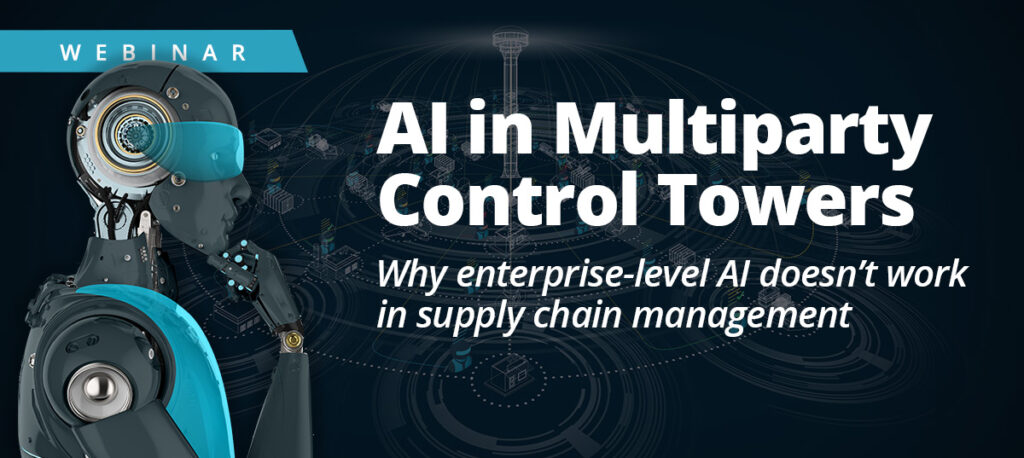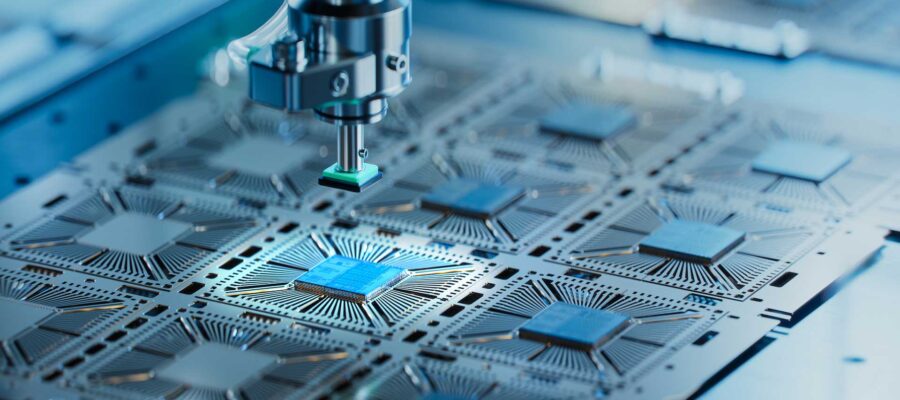This post has already been read 4853 times!
The explosion in AI and the trend for embedding AI everywhere is stretching supply chains
Innovation in generative AI and machine learning has skyrocketed over recent years, leading to countless exciting new apps and technologies. Unfortunately, AI relies on computing hardware that’s in short supply. How is the boom in AI development impacting the tech supply chains with limited chip manufacturing capacity?
AI-Powered Supply Chain Strain
The past few years have witnessed an astounding explosion in AI development, from consumer-focused chatbots to powerful business algorithms. The global AI market has a 19% CAGR, with experts estimating it will be worth over $2.5 trillion by 2032. Unfortunately, one big challenge may be in the way of that growth — the tech supply chain.
A Bottleneck for AI Industry Growth
There’s no shortage of talented inventors and innovators with exciting ideas for AI. However, a shortage of one critical component makes AI advancements challenging. AI relies on graphics processing units (GPUs), which are particularly powerful computer chips capable of efficiently handling massive amounts of data.
Any tech company that wants to work with AI needs access to hardware that can handle heavy processing loads. With GPUs in short supply, many businesses and researchers face significant setbacks — particularly startups and independent researchers.
How the AI Boom is Impacting Supply Chains – With GPUs in short supply, many startups and independent researchers are being held back… Click To TweetThe AI boom is inadvertently making it more difficult for new businesses to enter the market. As demand for AI skyrocketed over recent years, so did demand for high-end GPUs. Now, orders have reached a tipping point where chip manufacturers are operating at 90% of maximum capacity but still can’t keep up. As a result, more businesses and researchers cannot get the GPUs they need to power new AI tools and apps.
The impact isn’t limited to AI-focused companies. An increasing variety of businesses are folding AI into their products and operations. At the same time, GPUs are necessary for many other applications besides AI. These factors contribute to a ripple effect of shortages and delays connected to the AI boom’s impact on tech supply chains.
An Issue of Timing
The timing of the influx in GPU demand is a significant part of the supply-chain issues the AI boom is causing. New chip-manufacturing facilities are in development and under construction worldwide. Unfortunately, most won’t be online until 2025 or later. Between 2023 and at least 2025, the maximum chip-manufacturing capacity will remain limited.
“Artificial Intelligence, deep learning, machine learning — whatever you’re doing if you don’t understand it — learn it. Because otherwise you’re going to be a dinosaur within 3 years.”
Dr. John Kelly, “The Father of Watson,” IBM
Unfortunately, the AI boom is happening now, not in 2025. Many new AI startups, apps, research projects and businesses can’t wait years to get off the ground if they want to take advantage of the current peak in AI investment. Entrepreneurs and investors don’t want to risk waiting for the GPU supply chain to recover due to concerns that interest in AI might not be as strong by then.
This means the demand for GPUs isn’t going to cool down until more chip fabs are operational. The AI boom may be straining tech supply chains, but those same supply-chain issues are also limiting the growth of the AI market for the foreseeable future.
How Are Businesses Responding to the AI ?
Some organizations are working to solidify relationships with suppliers so they can get access to new GPUs earlier than competitors. Others are turning to cloud-computing providers for assistance, but even cloud providers are running out of computing capacity.
Some strategies are riskier than others. For example, one unfortunate side effect of electronics shortages is a growing interest in counterfeits and low-quality alternatives. Industry experts warn using counterfeit electronics comes with serious risks, including potential legal and compliance issues. However, companies that are desperate to get computing capacity may be tempted to overlook those risks.
“We need to stop worrying about the possibility of computers becoming more intelligent than us, and start worrying about the fact that they might remain as dumb as they are, and yet in charge of everything.”
Kevin Ashton
Even if a GPU isn’t counterfeit, it may not be able to support the computing demands a business wants from it. This is why AI companies aren’t turning to consumer-grade GPUs. The consumer electronics industry experienced a serious supply shortage throughout the peak of the COVID-19 pandemic. That shortage has since declined and prices for consumer GPUs are largely back to pre-pandemic MSRP rates.
For small startups or research projects, consumer-grade GPUs might be able to get the job done. This won’t work for large companies and startups looking for investors, though. The GPUs they need are high-end, industrial-grade units. Organizations that have these GPUs are more likely to get funding and get more GPUs with that funding.
GPUs as a Service
Some businesses are leveraging the need for this particular niche of computer chips. For instance, one San Francisco-based startup is selling GPU access as a service. Their model allows customers to rent out NVIDIA H100 GPUs — the most in-demand graphics card for AI applications.
Strategies like this can ease the strain on the GPU supply chain for the time being. GPU access as a service could allow specific customers to get the computing power they need without purchasing their own chips. For example, an entrepreneur experimenting with a new AI idea can rent a few H100s rather than contribute to the lengthening wait list to buy new GPUs.
Focusing On Metrics Rather Than Hardware
Another creative strategy businesses use to take advantage of the AI boom while avoiding tech-supply shortages is refocusing on computing efficiency. H100s and other GPUs in high demand for AI applications are desirable due to their high computing efficiency. Why not try to achieve that same efficiency with different hardware?
This is the exact question many organizations are asking. Some older GPUs are more readily available, although they aren’t as powerful as newer models. Businesses can use these older GPUs in computing environments that have been highly optimized for efficiency. It’s not a fix-all solution, but it can help tide many projects over until tech supply chains recover.
Can AI Help the Supply Chain?
Ironically, AI may be able to help tech supply chains bounce back from shortages and delays. AI can’t help with the fab constraints, but it can help allocate available supply and minimize disruptions in the supply chain. There are many applications for AI in the supply chain that can improve efficiency, visibility, transparency and forecasting accuracy. If tech supply chains are going to adapt to GPU shortages, they will need to leverage technology to evolve.
“Improving forecast accuracy is one of the known process improvements that drive direct bottom line benefits to companies.”
Ranjit Notani, Chief Technology Officer, ONE
Experts predict AI is so powerful and versatile that it could eliminate thousands of supply chain jobs through automation. For example, machine learning can power digital twins that more accurately predict supply and demand, significantly reducing shortages. Generative AI can draft many supply-chain management documents and improve communication. AI-powered analytics can identify and resolve supply-chain bottlenecks, minimizing supply chain disruptions and improving resilience.
There are countless applications for this technology in tech supply chains. Even more will be possible once more AI companies can get the computing power they need. Supply-chain organizations can help make that possible and reduce shortages and delays by using the already-available AI tools.
Recovery for Tech Supply Chains in the AI Boom
The AI boom contributes to and suffers from tech supply-chain shortages and delays. These shortages are specifically affecting the high-end GPUs capable of efficiently handling large amounts of data. Supply of these chips will likely remain low until more chip fabs are constructed and go online, which is likely still at least one to two years away.
Businesses can manage supply chain issues in the meanwhile by getting creative with the computing resources they do have. Businesses can also leverage platforms and networks that already make extensive use of AI to improve their supply chain planning, operations, and logistics, to optimize their supply chains and maximize their efficiency. They can also better manage limited supply and optimize their product mix to maximize their sell-through and revenue.
To learn more about how AI can be leveraged in supply chain with a network, watch, AI in Multi-Party Control Towers.

Recommended Posts
- What is a Digital Supply Chain Network?
- Infographic: 6 Requirements for Transforming Supply Chains with Artificial Intelligence
- Generative AI: Force Multiplier for Autonomous Supply Chain Management
- How AI Will Transform Project Delivery in Advanced Manufacturing
- How Autonomous Vehicles Will Transform Last-Mile Delivery
- How Autonomous Vehicles Will Transform Last-Mile Delivery - May 6, 2024
- 3 New Innovations Set to Enhance the Cold Chain, Reduce Health Risks, and Cut Pharmaceutical Supply Chain Costs - December 13, 2023
- How the AI Boom is Impacting Supply Chains - October 9, 2023
